Merrill Auditorium was empty as Ray Cornils sat at the console of the Kotzschmar Organ. He pushed his glasses to the bridge of his nose, stretched his arms over the keys and paused ever so briefly.
With an understated flourish, he flexed his muscular fingers, and the pipe organ sprang to life, filling the hall with soaring, brassy sounds.
Head cocked, ears alert and eyes wide open, Cornils listened intently as he played. He has performed on this organ countless times since becoming the city’s municipal organist in 1990, but never until that moment on a lazy summer afternoon in late August had Cornils heard the Kotzschmar sound quite like this.
“There,” he said, excitedly. “Did you hear that? It used to growl. Now it sings. That sound is not new, but I’ve never heard it before. These pipes have never responded in that fashion, which is wonderful.”
On Sept. 27, Cornils will lead a musical program that celebrates the return of the century-old, city-owned Kotzschmar to the sound of its youth, when it was a new instrument with clarity, depth and uncommon strength. The return of the Kotzschmar signals the start of a busy fall arts season in Portland, southern and midcoast Maine. It also represents a high-water mark in the city’s cultural history and the community’s commitment to the arts.
The organ was removed from Merrill beginning in August 2012 and has undergone an extensive, two-year renovation. Every pipe and pedal, all the electronics, 100 miles of wiring and even the massive wind chest, which is nearly the size of a tractor-trailer, were removed, cleaned, rebuilt, refurbished or replaced.
Though occasionally taken for granted during its long history, the Kotzschmar now stands as it did in 1912 – the crown jewel of Portland – when it came to the city as a gift from businessman Cyrus Curtis.
It was named after Curtis’ music teacher, a German immigrant named Hermann Kotzschmar, whom history has treated as Portland’s first outspoken arts advocate. He taught music to many Portland children and helped direct a generation of youngsters toward an appreciation of musical performance.
Portland was the first of many cities in the United States to have its own organ. The organ then was considered a focal point of entertainment for common folk. Over time, with the advent of radio, TV and other forms of mass-media entertainment, they disappeared. Many were dismantled and sold, others outright destroyed when buildings were demolished.
The Kotzschmar endured.
Today, Portland remains one of two cities in the country that has both a municipal organ and municipal organist. San Diego, whose population is greater than the population of the state of Maine, is the other.
Snowplows and potholes have become higher budget priorities most places. In Portland, the organ remained a source of civic pride, even though it has survived periods of neglect and more than once was mistreated during auditorium renovations, including when Merrill received its major makeover in the 1990s.
Through it all, the organ has remained something to be nurtured and celebrated, said John Bishop, a board member of the Friends of the Kotzschmar Organ, which has overseen the organ’s care since 1981, and chairman of the committee that guided the organ’s renovation.
“It’s such a wonderful statement for a city to put cultural affairs in such an exalted place,” he said.
The renovation project cost $2.6 million, half of which came from a municipal bond paid for with surcharges added to tickets for events at Merrill, the city-owned auditorium that houses the organ. The friends raised the rest.
HEARING ‘SONIC WONDERS’
Because of its age, depth of sound and range, the Kotzschmar is known worldwide among those who care about organs, said Michael Barone, who hosts the American Public Media radio program “Pipedreams.” He called it “one of the landmark pipe organs in the United States.”
With this renovation, more attention will be paid in the future, he said. People are curious what the organ will sound like and interested in how it will be used.
The gala on Sept. 27 will offer the first clue. Cornils has programmed the evening as “a rousing romp celebrating the full-spectrum sonic wonders of the Kotzschmar organ.”
There will be nods to the past, including a piece written by the man after whom the organ is named as well as the fresh awakening of Carson Cooman’s new “Concertino FOKO,” named in honor of the friends group.
The renewed clarity of the pipework will allow the counterpoint of Bach’s Triple Fugue in E-flat Major (the “St. Anne”) to shine, Cornils said, and he hopes the audience will enjoy such 19th-century organ works as Vierne’s Carillon de Westminster and Guilmant’s Symphony No. 1, both with added brass and percussion ensemble.
In addition to Cornils, the concert will feature Peter Richard Conte, grand court organist of the Wanamaker Organ at Macy’s in Philadelphia, and the Kotzschmar Festival Brass, a group that accompanies Cornils on many performances.
The organ will get a workout right away, with a half dozen events scheduled through the end of the year.
They group has just begun a $1.5 million fundraising campaign for an endowment that will help care for the organ going forward, to help prevent some of the problems that have surfaced in the recent past.
Connecticut-based Foley-Baker Inc. renovated the organ. Craftsmen from the company began dismantling the organ moments after the Kotzschmar celebrated its 100th anniversary in August 2012. They removed each piece of the organ, including 6,857 pipes, and trucked them back to Foley-Baker workshops and warehouses in Tolland, Connecticut.
NEW BELLS AND WHISTLES
Over the past two years, the Foley-Baker team has gone through the organ piece by piece, cleaning dirt and grime from the pipes, replacing worn parts, and building new pipes from metal and wood.
The pipe count now is up to 7,101. The new pipes add more range – including bells and whistles. Among the new sounds at Cornils’ disposal are train whistles, door bells, a fire gong, horse hoofs, car horns and bird chirps.
“This is not a static instrument,” Cornils said, explaining the additional pipes. “Life has changed since 1912. Our goal is not to change the instrument, but to acknowledge the great instrument that this organ is and was, and empower it back to its original voice.”
Most significantly, Foley-Baker rebuilt the wind chest, which had sprung leaks and lost much of its power, resulting in hissing and limited capacity. Cornils estimated the Kotzschmar was operating at 60 percent to 70 percent of its capacity before the renovation. “Now it’s doing what it should be doing and can be doing,” he said, “There’s a brightness, clarity and happiness to the sound.”
If the gold-colored pipes on the Merrill stage are the organ’s face and the console its brain, then the wind chest represents its heart and lungs.
The wind chest is an air-locked chamber that sits out of the public view backstage at Merrill. It is 53 feet long, 7 feet wide and 6 feet 9 inches tall. The wind chest was originally 7 feet tall, but had been cut down to 5-foot-3 during a long-ago hall renovation. At 6-foot-9, the new wind chest is three inches short of its original height.
It is the foundation of the organ, supporting the pipes above it and providing the air that moves through the pipes to give them sound. In order to rebuild the wind chest, Foley-Baker had to remove all the pipes and the mechanisms that control them. Given that, it made sense to refurbish all elements of the organ.
The process of rebuilding the wind chest began immediately after the organ was taken apart two summers ago. It was completely rebuilt with eastern white pine and poplar.
The scope of the project surprised the Friends board, Bishop said. As long ago as 2007, the board planned to make changes to the Kotzschmar. The group wanted to rectify problems with major bass voices of the organ that surfaced following the late-’90s Merrill renovation, when the organ was removed for the renovation and reinstalled with a limited budget. The bass voices did not weather the move well.
Cornils described the prior sound as lacking clear pitch, or “woolly.”
“There was some indecision, or a lack of response in some of the pipes,” he said. “The diction of the pipes was indistinct.”
The Friends had received a financial gift to fix the problem. It hired a contractor for an estimate, and the contractor came back with bad news: “His take was, the organ was in such terrible condition that if we did that kind of invasive work we would take five steps backward,” Bishop said. “That was a magic moment in the life of a nonprofit board, when reality strikes in a real hurry. It went real quiet in that room for a long while.”
That summer, the group hosted a Kotzschmar symposium to gather input from a range of experts. The consensus was that, while the organ was still adept and powerful, it was a shell of its former self.
“It was very hard for us to hear that,” he said. “It had been publicized that the organ had been renovated and even restored when the hall was restored. The headline was, ‘Organ returns to its former glory.’ But that was not the case at all.”
The board decided to wait until after the organ’s centennial celebration to begin the project, using the 100th anniversary as a fundraising tool.
ORGANIST’S TEST
Cornils said audiences will absolutely notice the difference in how the organ sounds. More important, he and others who play the organ will have greater latitude in choosing music. Before, he tailored his choices around the limits of the instrument.
“Now I can play the literature in a way that matches my concept of the piece and not have to quite fudge it to find a magic trick to get it to sound the way I’d like it to. It just does,” Cornils said. “The pipes are up to the task. Before they weren’t.”
Cornils, who lives in Woolwich, had been in the hall several times during the re-installation process. He had noodled around on the organ, but the first chance he got to really play came on the last Monday of August.
He brought several sets of sheet music with him.
At first, his facial expression remained reserved. He was interested in listening, to test the response of the pipes. He moved around the console, pulling out many of the stops, determining what sounds were at his disposal. What he heard that day was still a work in progress. All the pipes had not been tuned, and Cornils found several buttons that were not yet wired for sound.
But what he heard left him elated.
“I couldn’t be more pleased,” he said, concluding the session.
He removed his glasses and smiled. The organ passed its test. For the first time since Cornils began playing the Kotzschmar a quarter-century ago, he finally knew how it was meant to sound.
Copy the Story LinkSend questions/comments to the editors.


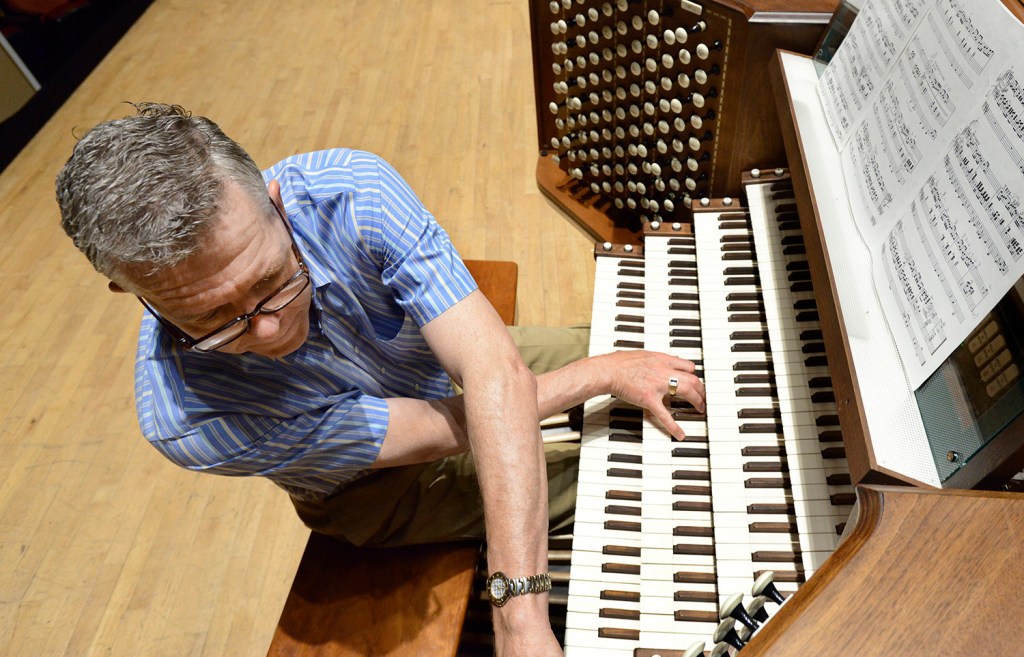
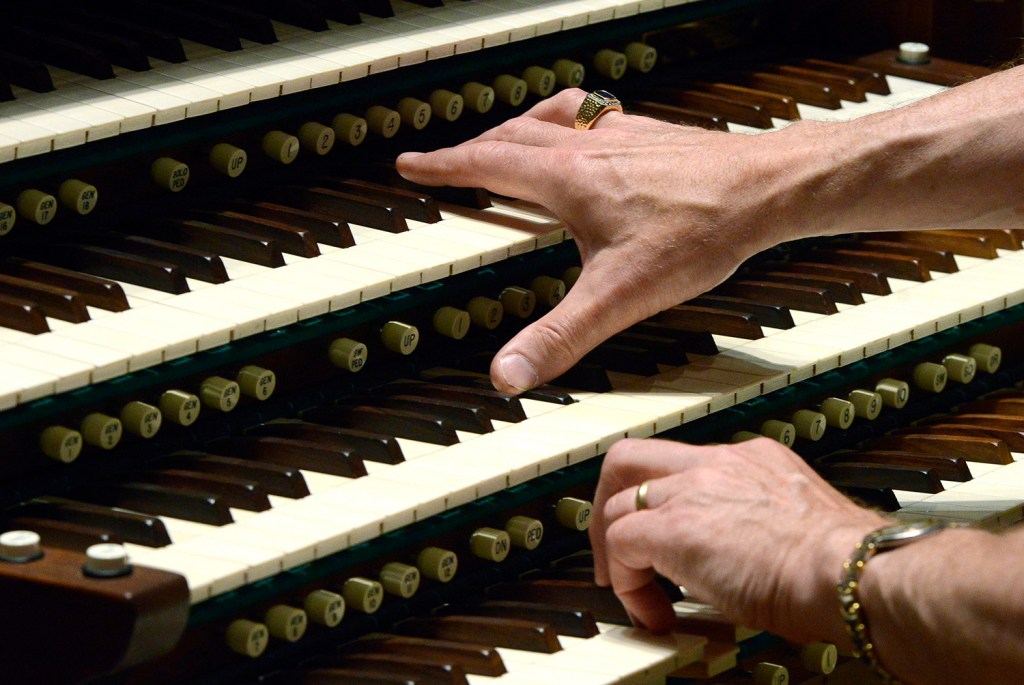
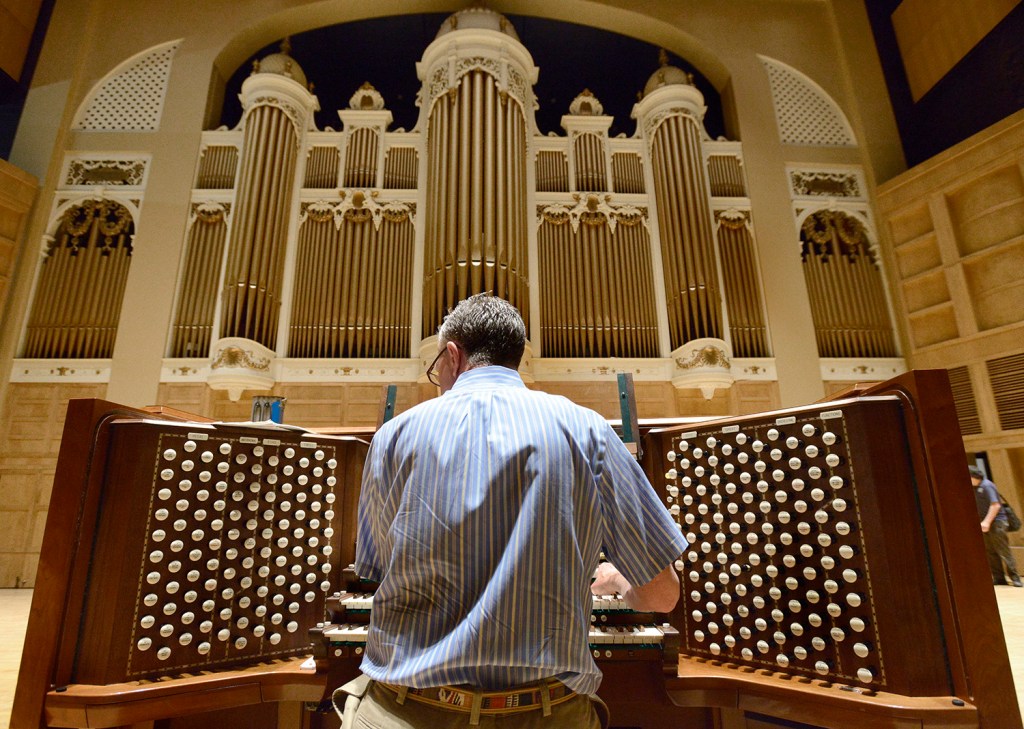
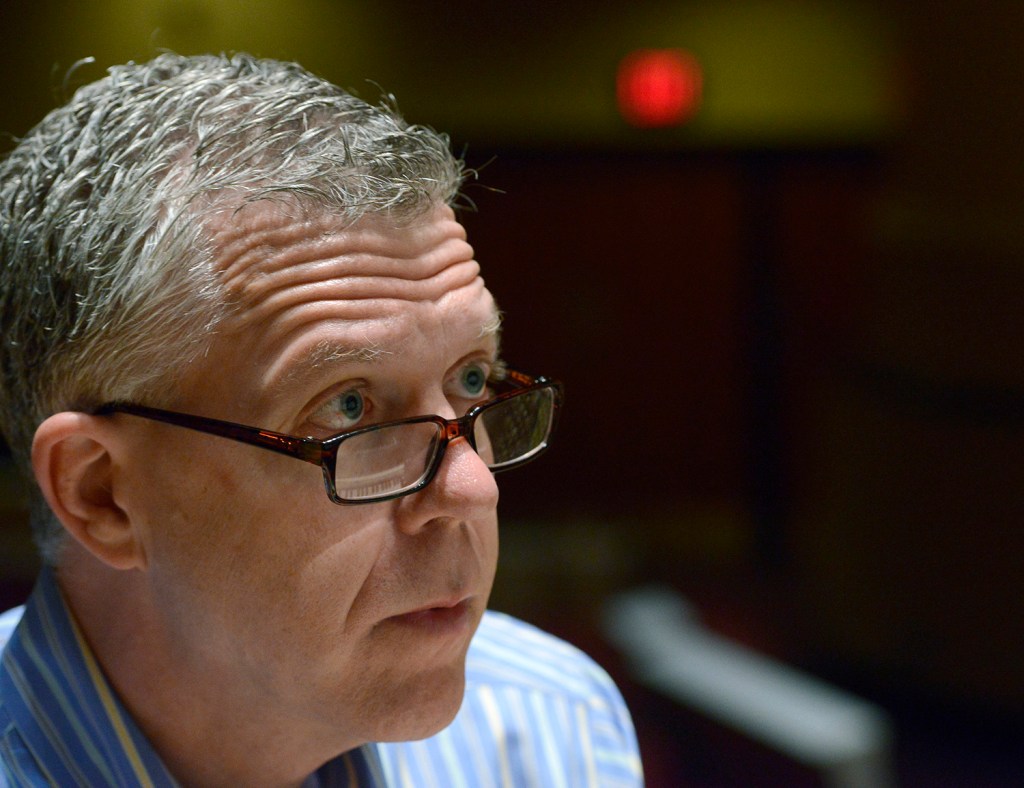
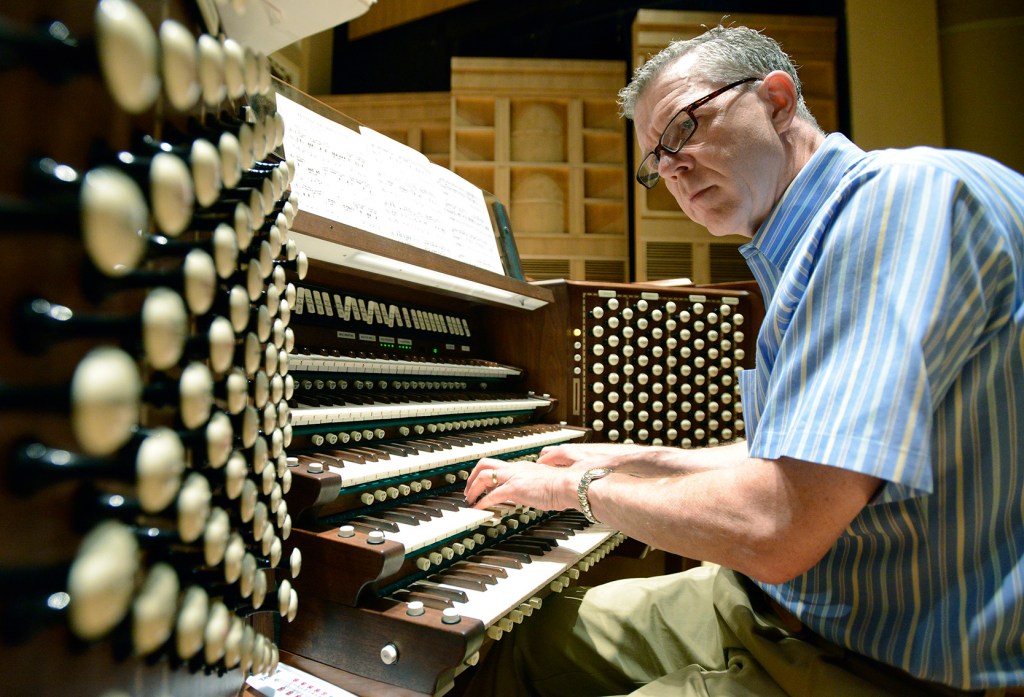
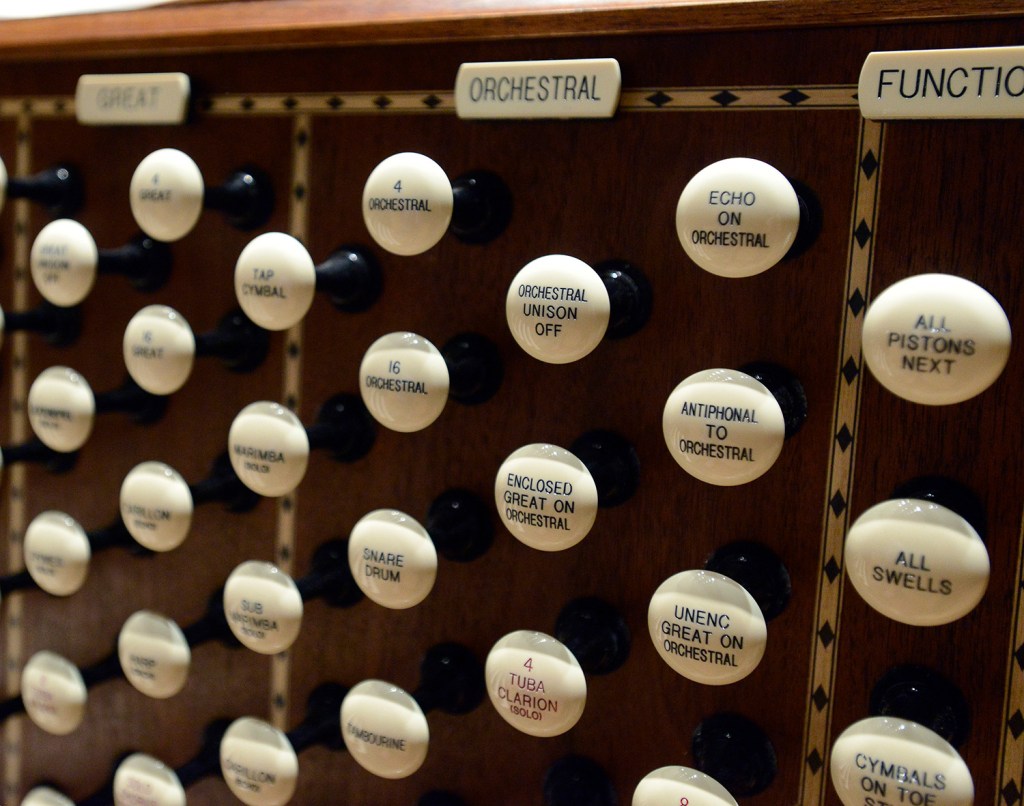
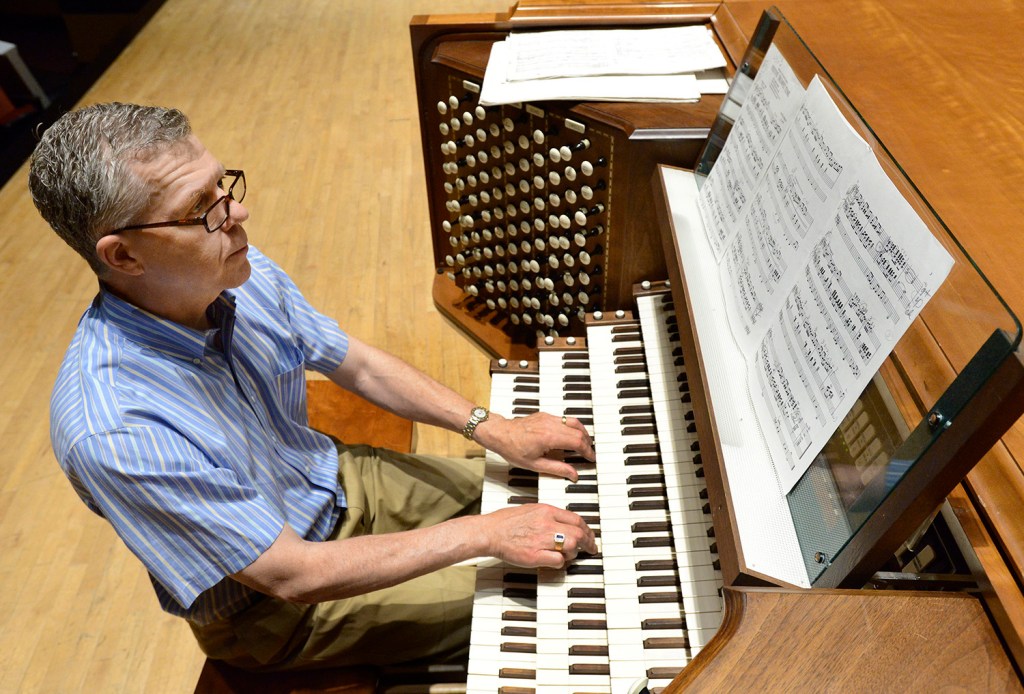
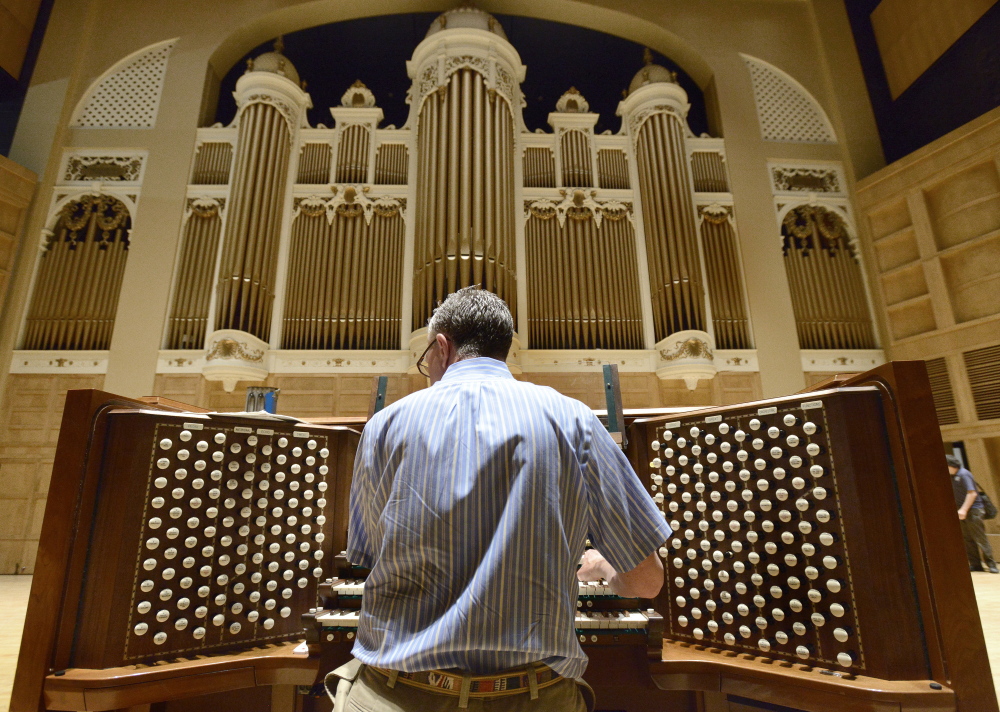

Success. Please wait for the page to reload. If the page does not reload within 5 seconds, please refresh the page.
Enter your email and password to access comments.
Hi, to comment on stories you must . This profile is in addition to your subscription and website login.
Already have a commenting profile? .
Invalid username/password.
Please check your email to confirm and complete your registration.
Only subscribers are eligible to post comments. Please subscribe or login first for digital access. Here’s why.
Use the form below to reset your password. When you've submitted your account email, we will send an email with a reset code.